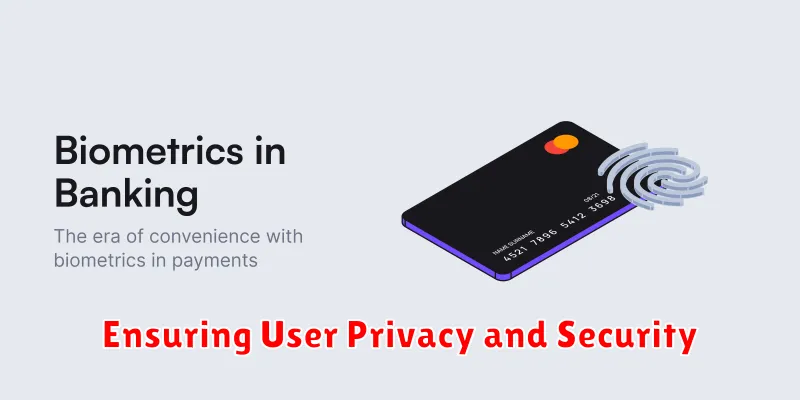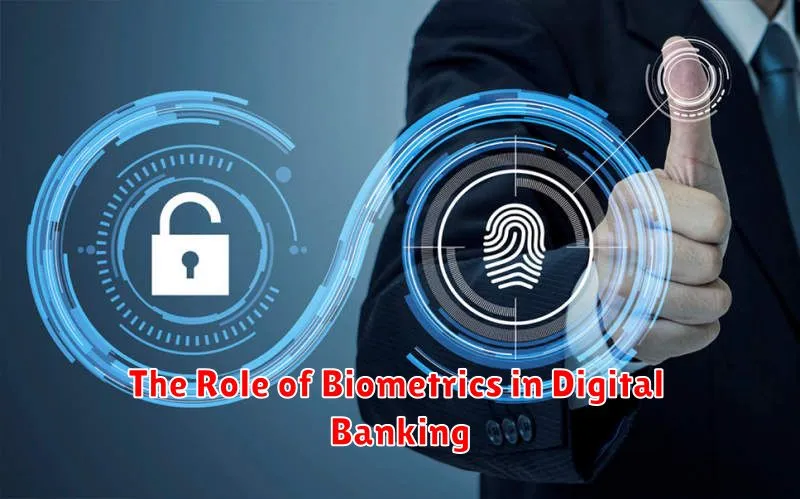Biometrics is rapidly transforming the landscape of digital banking, offering enhanced security and a more seamless user experience. This innovative technology utilizes unique biological identifiers, such as fingerprints, facial recognition, and voice patterns, to authenticate users and authorize transactions. The increasing prevalence of mobile banking and online financial services has created a critical need for robust security measures, and biometrics has emerged as a powerful solution to combat fraud and protect sensitive financial data. This article will explore the evolving role of biometrics in digital banking, examining its benefits, challenges, and potential impact on the future of finance.
From streamlining login processes to authorizing high-value transactions, biometric authentication is revolutionizing how customers interact with their digital banking platforms. Beyond enhanced security, biometrics also offers the potential for increased convenience and personalized banking experiences. As the adoption of biometrics continues to grow, it is crucial to understand the implications for both financial institutions and consumers. This article will delve into the various applications of biometric technology in digital banking, analyzing its impact on customer experience, fraud prevention, and the overall evolution of the financial industry. We will also discuss the security considerations and ethical implications associated with the widespread implementation of this transformative technology.
Understanding Biometric Technology
Biometrics refers to the unique physical or behavioral characteristics that can be used to identify an individual. These characteristics include fingerprints, facial features, voice patterns, and iris scans.
Biometric technology works by capturing a sample of a user’s biometric trait and converting it into a digital representation. This representation, called a template, is then stored securely and compared against future samples for authentication purposes. Accuracy and security are crucial aspects of biometric systems, ensuring reliable identification and protection against unauthorized access.
Fingerprint Authentication
Fingerprint authentication is a widely adopted biometric method in digital banking. It leverages the unique pattern of ridges and valleys on a user’s fingertip to verify their identity. This method offers a convenient and relatively secure way to access accounts and authorize transactions.
The process typically involves the user placing their finger on a fingerprint sensor. The sensor captures the fingerprint image and compares it to a previously registered template. If the patterns match, authentication is successful, granting the user access.
Fingerprint authentication provides several advantages. It eliminates the need to remember complex passwords, and the inherent uniqueness of fingerprints enhances security compared to traditional methods.
Facial Recognition for Banking
Facial recognition is rapidly gaining traction as a biometric authentication method in digital banking. It offers a convenient and secure way for customers to access their accounts and conduct transactions.
The technology works by analyzing unique facial features to create a digital template. This template is then compared against a stored image to verify the user’s identity. This process eliminates the need for passwords or PINs, streamlining the login process.
Facial recognition can be used for a variety of banking functions, including mobile banking login, ATM access, and in-branch transactions. It also offers an added layer of security against fraud and identity theft.
Voice Recognition Security

Voice recognition, also known as speaker recognition, is a biometric modality used to verify a user’s identity based on their unique vocal characteristics. It analyzes various aspects of speech, including pitch, tone, cadence, and pronunciation, to create a voiceprint.
This voiceprint serves as a template for future authentication attempts. When a user wants to access their account, the system captures their voice and compares it to the stored voiceprint. A successful match grants access, while a mismatch indicates a potential security breach.
While convenient, voice recognition faces challenges. Background noise, voice changes due to illness, and voice mimicry can compromise its effectiveness. Therefore, it is often used in conjunction with other security measures to enhance overall system reliability.
Benefits of Biometric Authentication
Biometric authentication offers several key advantages in digital banking. It provides enhanced security, making it significantly more difficult for unauthorized individuals to access accounts. This is because biometric traits are unique to each individual.
Improved user experience is another benefit. Remembering complex passwords is no longer necessary, leading to a more streamlined login process. This convenience factor contributes to increased customer satisfaction.
Furthermore, biometrics helps reduce fraud. The difficulty of replicating biometric data makes it a strong deterrent against fraudulent activities. This added layer of security protects both the customer and the financial institution.
Concerns and Limitations
While biometrics offer enhanced security and convenience in digital banking, several concerns and limitations must be addressed. Privacy is a significant concern as biometric data is sensitive personal information. Data breaches could expose this data to misuse.
Security vulnerabilities also exist. Systems can be spoofed with sophisticated techniques. Furthermore, unlike passwords, compromised biometric data cannot be easily changed, creating long-term risks for users.
Accessibility can be a challenge. Certain biometric methods may not be suitable for all users, particularly those with disabilities. Technical limitations, such as requiring specific hardware or software, can also restrict access.
Finally, cost is a factor. Implementing and maintaining biometric systems can be expensive for financial institutions.
Integration into Banking Apps
Integrating biometrics into banking apps streamlines various processes, enhancing both security and user experience. Authentication becomes quicker and more convenient, replacing passwords with fingerprint scans or facial recognition.
This technology also strengthens fraud prevention. Biometric data is unique to each individual, making it significantly more difficult for unauthorized access. Transaction authorization also benefits, allowing for secure and seamless approvals with a simple touch or glance.
Implementation requires careful consideration of user privacy and data security. Banks must adhere to strict regulations and ensure robust security protocols to protect sensitive biometric information.
Future Trends in Biometrics
The future of biometrics in digital banking promises enhanced security and user experience. Behavioral biometrics will move beyond simple typing patterns to encompass more complex interactions like scrolling and navigation speed. This will create a more robust and seamless authentication process.
Multi-modal biometrics, combining two or more authentication factors like facial recognition with voice verification, will further strengthen security. This layered approach minimizes vulnerabilities associated with single-factor biometric methods.
Cloud-based biometric solutions will become increasingly prevalent, allowing for greater scalability and flexibility for financial institutions. This shift will also facilitate improved data sharing and analysis while adhering to strict privacy regulations.
Enhancing User Experience
Biometrics plays a crucial role in enhancing the user experience within digital banking. By simplifying authentication processes, biometrics eliminates the need to remember complex passwords or PINs. This streamlined login experience contributes to increased user satisfaction and encourages more frequent engagement with banking platforms.
Beyond login, biometrics can facilitate seamless transaction authorizations. The speed and convenience of biometric confirmation reduces friction during payments and transfers, creating a more efficient and enjoyable user experience. This ease of use can also contribute to a greater sense of security, reassuring users that their financial information is well-protected.
Ensuring User Privacy and Security

Biometric authentication offers significant security advantages in digital banking, but also raises privacy concerns. Protecting user data is paramount. Financial institutions must employ robust security measures to safeguard biometric templates and prevent unauthorized access or misuse.
Encryption plays a vital role in securing biometric data. Data should be encrypted both in transit and at rest. Furthermore, access to this sensitive information should be strictly controlled and limited to authorized personnel. Regular security audits and vulnerability assessments are essential to ensure the ongoing effectiveness of these measures.
Transparency with users is crucial. Clearly communicating how biometric data is collected, stored, and used helps build trust. Users should have control over their data and the ability to opt out of biometric authentication if desired.

